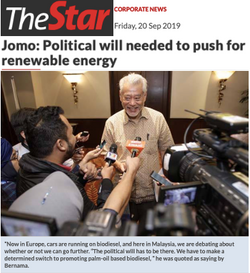- May 6
- 4 min read
KUALA LUMPUR, Malaysia, May 6 2025 (IPS) - US President Donald Trump has deliberately sown discord worldwide in attempting to remake the world to serve supposed American interests better. He will not cede influence, let alone power and control, to other nations, let alone people.
Mar-a-Lago Accord
His chief economic adviser, Stephen Miran, has offered some rationale for Trump’s tariffs besides promoting his ‘Mar-a-Lago Accord’ plan for US imperial revival. But even if most governments comply, the US deficits dilemma will not be resolved.
For Miran, Trump is reshaping the US-led unipolar world more equitably by getting others to bear more of the costs of ‘global public goods’ that the US ostensibly provides.
As geopolitical economist Ben Norton has noted, the US spends trillions on its global empire, with around 800 military bases abroad! While influential US corporate interests have benefited most, others have also gained.
The US contributed to the Global North’s reconstruction boom after World War II (WW2). After pre-empting growing Soviet influence from the last year of WW2, the US enhanced its hegemony by strengthening allies during the first Cold War.
However, Miran complains it is too “costly” to maintain the post-Cold War unipolar order without others bearing their “fair share” of the US costs of providing a “global security umbrella” and international dollar liquidity.
1985 Plaza Accord
In the 1980s, many complained about how Japan and Germany, which had lost WW2, had benefited from imposed military spending constraints and US occupation to gain industrial leadership worldwide.
At its second meeting at New York’s Plaza Hotel, the US-led Group of Five (G5), of the largest Western economies, agreed that the yen and Deutschemark should greatly appreciate against the US dollar.
This would ensure US recovery from its slowdown following dollar strengthening due to the Fed’s high-interest rate policy to quell inflation after the second oil price hike.
As the yen appreciated, Japan’s 1989 ‘Big Bang’ financial reforms sealed its fate. Its asset price bubble burst, also ending the post-war Japanese miracle boom.
Miran acknowledges US dollar “overvaluation has weighed heavily on the American manufacturing sector while benefiting financialised sectors of the economy in manners that benefit wealthy Americans”.
From Plaza to Mar-a-Lago
Unlike Plaza, Miran’s proposed Mar-a-Lago Accord, named for Trump’s private Florida retreat, will be imposed on all, especially allies in the Global North.
The Global North must improve the US trade balance by deterring imports and increasing exports by letting the dollar depreciate. Allies have been threatened with tariffs and unilateral withdrawal of the US security umbrella.
Miran’s proposal also envisions foreign governments holding 100-year US Treasury bonds. This should transfer long-term losses due to inflation to bondholders abroad.
He also wants a US sovereign wealth fund financed by revaluing US gold reserves to market prices. Meanwhile, his proposed cryptocurrency stabilisation fund already threatens to disrupt international finance.
His plan claims to reduce US trade deficits and bring back good jobs. Miran expects it will significantly shrink the US current account and fiscal deficits without requiring more tax revenue or spending cuts.
Weaker dollar not enough
Jenny Gordon has challenged Miran’s argument. She reasons that his plan is unrealisable without significantly shifting US resources from non-tradables to tradables.
Manufacturing investments needed to substitute imports and increase exports have to be financed. But the US has been a net borrower for almost half a century!
Its current account deficit reflects these savings-investment imbalances. The US would have to cut its capital account surplus by borrowing much less from others to reduce its current account deficit.
Making manufacturing more competitive requires a weaker dollar and new investment. The US must encourage Americans to save more, consume less, divert investment from elsewhere, and cut its fiscal deficit.
Otherwise, foreign borrowings financing manufacturing investments will strengthen the US dollar. Worse, a weaker greenback is needed to boost US competitiveness.
Miran may prevail
Even if US manufacturing recovers, well-paid jobs in depressed areas remain unlikely. Besides ageing, changing technology, consumption, and incomes have adversely affected prospects for reviving US manufacturing.
Government spending cuts have hurt state-sponsored research, which enabled the US to lead technological innovation worldwide until early this century.
Miran’s proposed forced conversion of US Treasury bonds held in official reserves to ‘century bonds’ will reduce confidence in the dollar and its liquidity value.
Besides lowering US borrowing costs, it would undermine the deep secondary market for US T-bills and dollar-denominated trade and financial flows—all key to dollar privilege.
The dollar’s status as a reserve currency has enabled the US to maintain massive fiscal deficits without high interest rates or the threat of currency collapse. But it has also constrained US economic options, favouring finance and other modern services.
Trump does not want to lose the dollar’s status as a reserve currency. His threat to the BRICS suggests likely harsh retaliation against efforts to reduce reliance on the US dollar.
The dollar’s status in international finance also enables the US to threaten others credibly. However, Trump’s treatment of allies reminds us that compliance does not ensure stability.
Miran presumes that trade and investment partner countries will do as he wants. While few may agree to his proposal, which will not work, not many may stand up to Trump. Worse, some are already giving lip service to the proposal.
Related IPS Articles:
Available online here: Trump Accord Sows Discord in US Empire




















